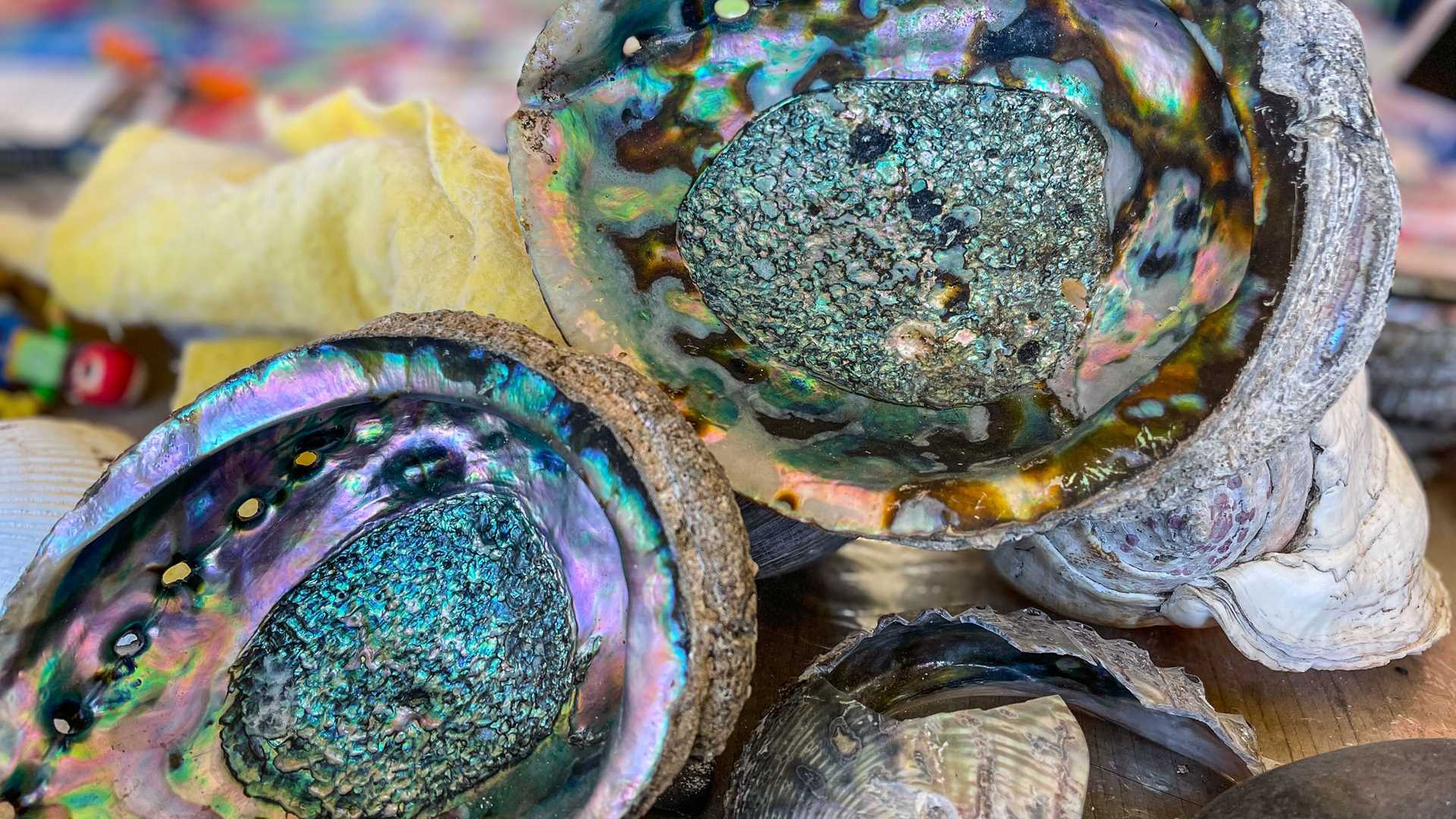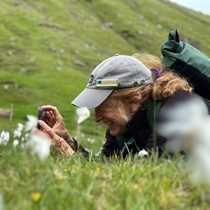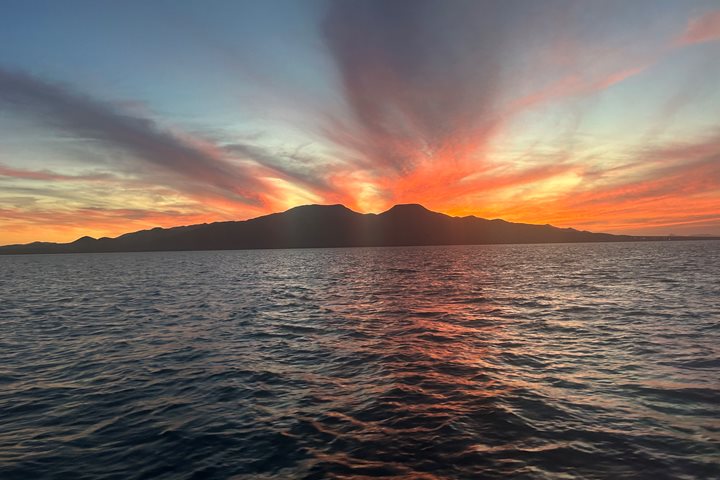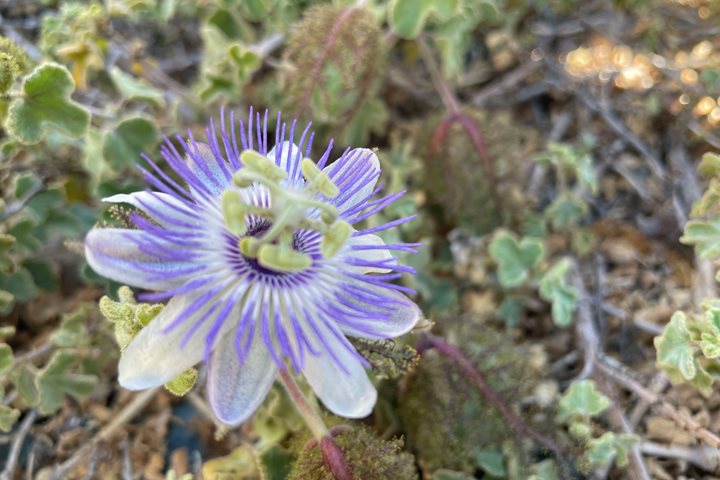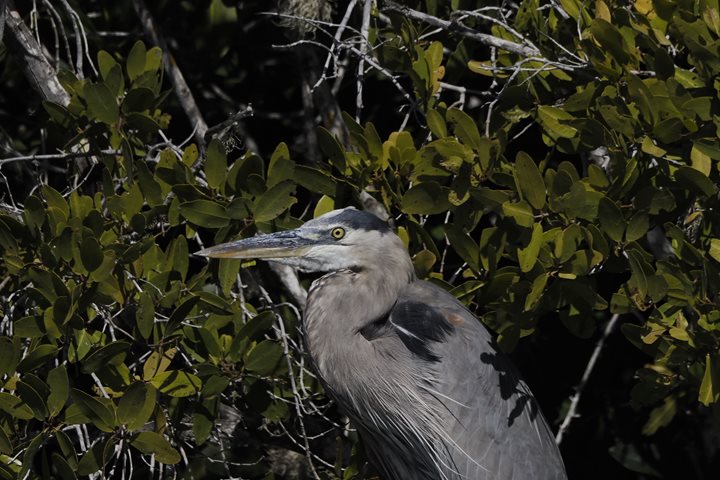So much of what was special to us today came from the sea. The fully articulated gray whale skeleton, most likely washed ashore many years ago, is now a perch for nesting osprey. The osprey parents bring the chicks freshly caught fish throughout the day. The mesmerizingly iridescent abalone shells were once discards and are now the foundation of a budding local artisan jewelry-making project. Shells, bones, a few skulls, and turtle carapace parts were piled up for the curious and inquisitive to investigate. On terra-firma, we found diminutive flowers as colorful exclamation points sprinkled throughout the desert vegetation. The Sonoran Desert in Baja California is described as where the desert meets the sea. Today we examined elements of both of these rich and unique realms.
- Daily Expedition Reports
- 04 Mar 2024
Isla Magdalena, Puerto Magdalena, 3/4/2024, National Geographic Sea Lion
- Aboard the National Geographic Sea Lion
- Baja California
Linda Burback, Naturalist/Certified Photo Instructor
Born in Cape Cod, Massachusetts, Linda and her Air Force family moved extensively throughout the U.S. when she was a child. Linda continues to travel and explore a broader spectrum of the world as a naturalist with Lindblad Expeditions-National Geogr...
Read MoreShare Report
Baja California: Observing the Whales of Magdalena Bay
VIEW ITINERARYRelated Reports
3/15/2025
Read
National Geographic Sea Bird
Puerto Magdalena
Walks in the desert can hold a plethora of surprises, and today was no exception. From clusters of scarlet Palo Adan flowers, the gems of the morning, to purple and white striped passion flowers. The numerous fruits on the vine attested to a series of flowers earlier this month. A diminutive bird, the verdin, was also interested in the Palo Adan flowers. The verdin’s short beak cannot reach the nectar, so this bird approaches the base of the flower, nips it open, and takes a nectar reward; pollination of the flower is thwarted in this thievery. The exoskeleton of a tarantula was found under the scrub, an indication of a spider that has molted and grown a bit bigger. At the end of the trail, we were all rewarded with a magnificent view of the Pacific Ocean. Good things come to those who venture outdoors.
3/14/2025
Read
National Geographic Sea Bird
Boca de la Soledad
Today we woke up in the northernmost part of Magdalena Bay. In the morning, we went whale watching at Boca de la Soledad, where we came across a mother and calf. Later, we went to Estero Chivo at high tide, where we observed a variety of birds. We were particularly interested in the numerous shorebirds, egrets, and herons. We raised anchor to continue our day. While transiting Hull Canal, we spotted bow-riding bottlenose dolphins. National Geographic Sea Bird set anchor in front of Magdalena Island. The wind was blowing, causing the dunes to come alive. After walking among dunes and desert plants, we arrived at the Pacific coast of Magdalena Island. We enjoyed walking along the beach and observing various shells, snails, and sand dollars. In the distance, we spotted the carcass of a beached gray whale and contemplated both life and death. These animals begin their lives on the coast of Mexico, and their cycle also ends here.

